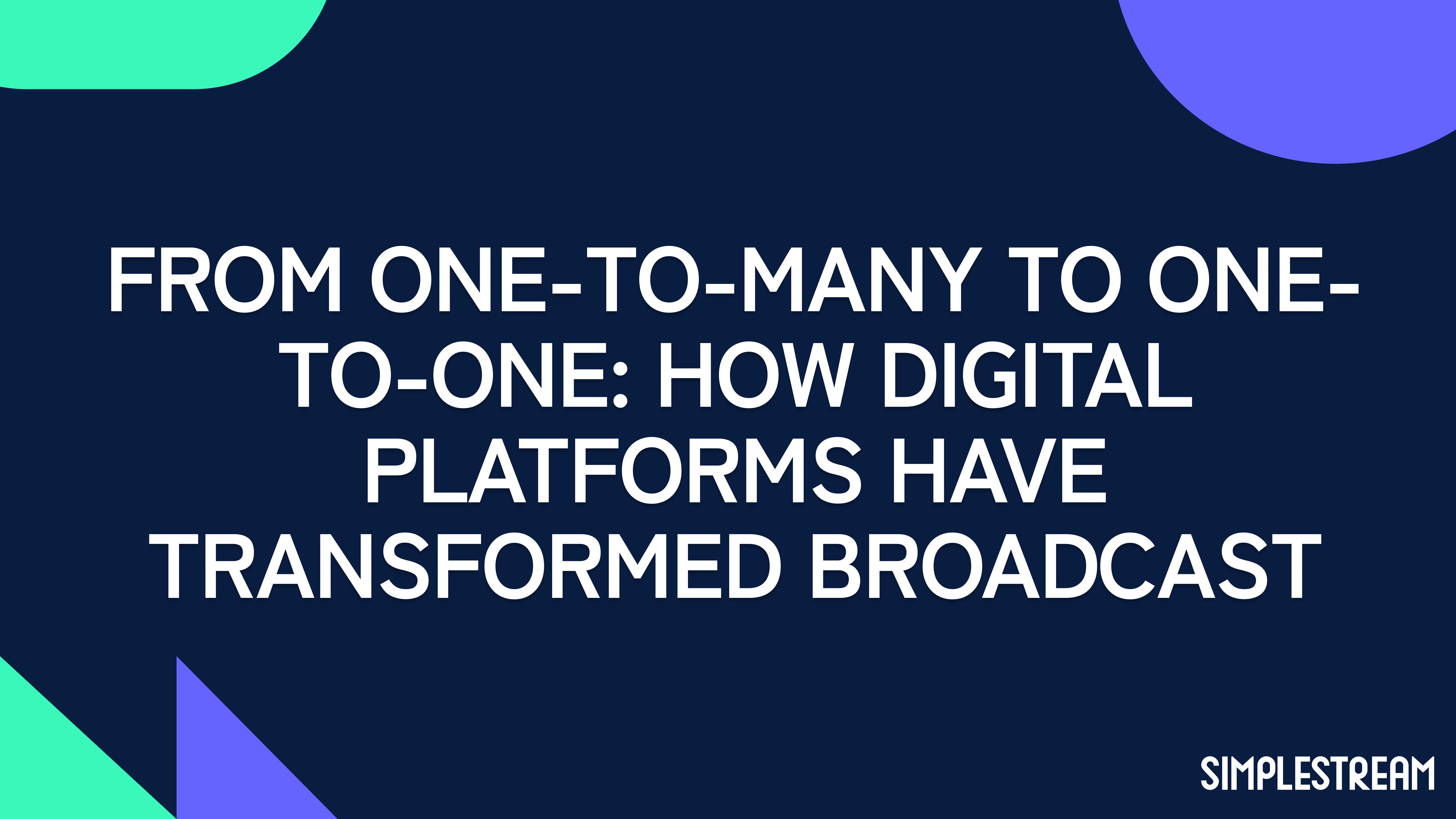Streaming consumption trends in 2022: eight things to keep in mind
We sat down with our CPO, Lewis Arthur, to discuss how the streaming industry is preparing for the future. Read on.
It’s been another boom year for the streaming industry. Several aspects related to home entertainment might have declined over the past few years, yet online video consumption is the biggest exception. This segment of the industry, in fact, is exploding. And the past couple of years undoubtedly contributed to the growth of OTT, a space that’s seemingly projected to change its shape again in 2022.
What are the main trends, going into the next 12 months? We sat down with our Chief Product Officer, Lewis Arthur, to discuss how the industry is gearing up for the future, with new trends entering the big picture.
1️⃣ OTT’s endless growth
The OTT space has been growing steadily for nearly a decade now, and the past couple of years seemed to fast-track its evolution, especially when it comes to innovative technologies at its foundations. The industry is expected to be worth over $1 trillion by 2027, which speaks volumes when compared to the value attributed to it pre-pandemic, back in 2019 ($121.61 billion). More and more streaming services are entering the market, and viewers are seemingly ‘cutting the cord’ on cable, highlighting a serious change in content consumptions habits.
2️⃣ Big screens are still ruling the world
Fact: OTT has outgrown television, becoming the preferred video delivery medium. However, habits in terms of consumption medium haven’t shifted much, and big screens still play a key role in the majority of households. If it’s true that cable TV has suffered a year-on-year decline (and this cord-cutting activity is expected to set a new pace, as mobile channels are busy growing content bundling), stats from our portfolio of clients also bear out that video consumption on smaller screens is growing at a slower pace compared to that on Smart TVs. The development of applications for big screens will remain one of the main focuses in 2022.
3️⃣ 5G: the game-changer?
5G internet, introduced a couple of years ago, is becoming the norm especially in big cities and urban areas. Live streaming is benefiting from this next-gen cellular network technology: think of live sporting events as a major example. 5G can be the real game-changer. As highlighted by a recent report by PwC, 29% of consumers admitted they would pay more to access better quality video and decreased buffering on mobile.
4️⃣ Localised streaming delivery
Online video is being made more and more accessible: anytime, anywhere, across the globe. Localisation is becoming a prominent aspect when analysing OTT services and their architecture. Brands and content owners need to be in control of their value chain. Multi-language options, bespoke captions and subtitling, as well as multi-currency payment options, are no longer a mere nice to have. At Simplestream, we support many different languages, with right-to-left support coming soon to enrich our proposition.
5️⃣ Content fragmentation
On the back of what we just said about localisation, another key trend for 2022 is enhanced content fragmentation, a strategy adopted by broadcasters and content creators to target specific audiences and maximise impact. The rule is: curate your content, and prepare it for delivery to make it land with the right audience demographic. An example? Disney progressively withdrew its content from providers such as Netflix and Hulu. The launch of its own platform – Disney+ – earlier in 2020 was one of the real breakthroughs in the OTT space, a testament to the process of content fragmentation described above.
6️⃣ Innovative monetisation models
Ever heard of subscription fatigue? Yes, it’s a thing, and it happens when consumers start feeling tired due to the increasing number of subscription businesses they are asked to sign up for. Subscription Video-On-Demand (SVOD) is still the king of all business models, but the latest research conducted among consumers highlights how the appetite for different models is growing. This trend is driving innovation in terms of OTT monetisation. Think of transactional (TVOD) – with in-app purchase capabilities – or advertising-based (AVOD) models: these alternatives are going to be more and more prominent in the near future.
7️⃣ User Experience as a USP
UX is and will remain one of the key indicators of success for OTT platforms. A fine-tuned user experience is key to business success and a design-first approach is what brands and content owners are looking for today. Ease of use, smart colour palettes, and intelligent navigation patterns – together with search functions and bespoke recommendations – are the backbone of a winning OTT proposition.
8️⃣ Sustainability
Sustainability is at the top of today’s tech companies’ list of priorities. How do we make the OTT industry planet-friendly and contribute to the fierce battle to keep the future of our world as green and viable as possible? The changes brought by the pandemic have marked a substantial acceleration in a process that was already underway. Remote production and distribution of content are bringing benefits – both from an operational point of view and in terms of a ‘greener’ approach – especially when it comes to large-scale live events.


